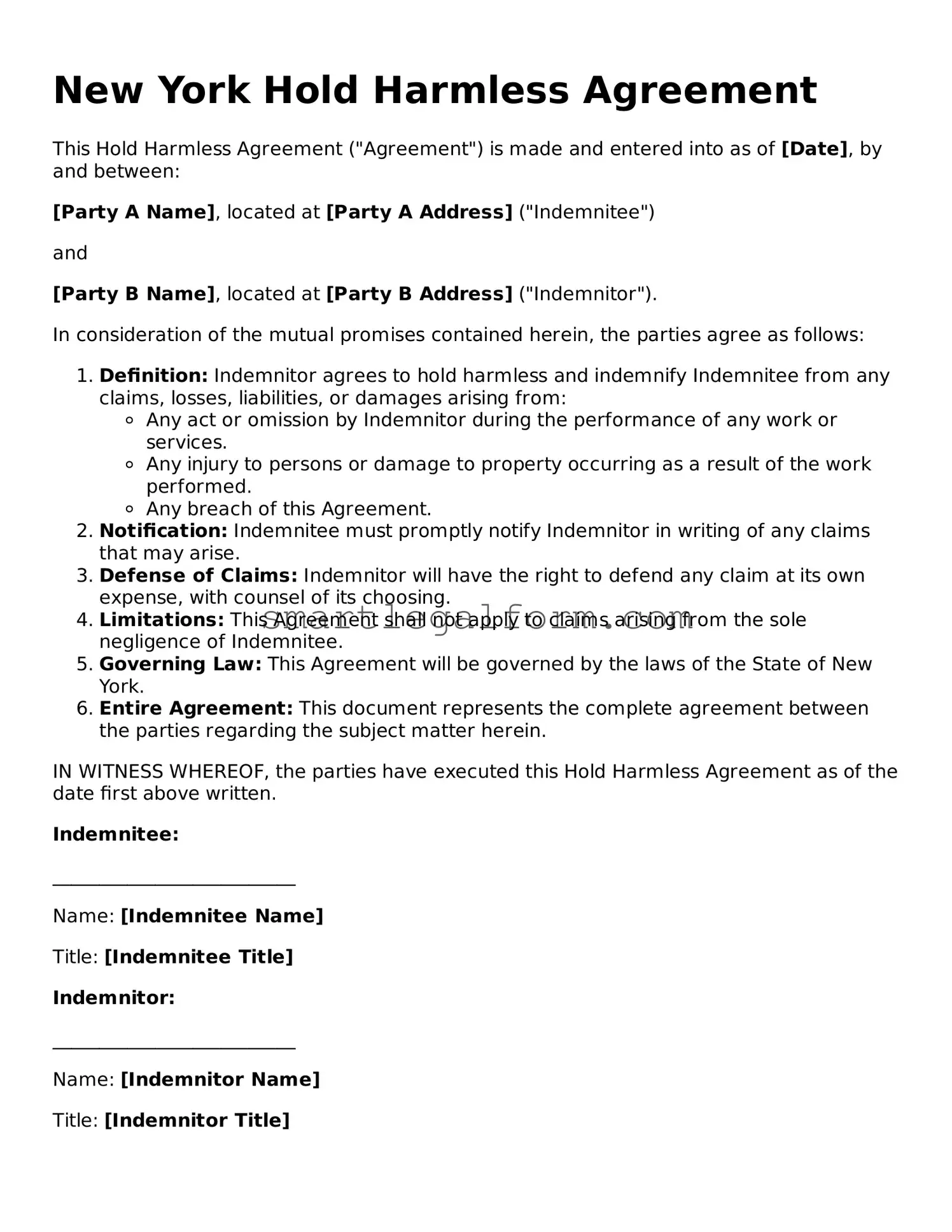Filling out a New York Hold Harmless Agreement can be a straightforward process, yet many individuals make common mistakes that could lead to misunderstandings or even legal complications. One frequent error is failing to provide complete and accurate information. When individuals skip sections or leave blanks, it raises questions about the intent and clarity of the agreement.
Another common mistake is not clearly identifying the parties involved. A Hold Harmless Agreement should explicitly state who is agreeing to hold whom harmless. Ambiguity in naming the parties can result in disputes down the line, making it essential to use full names and appropriate titles.
People often overlook the importance of specifying the scope of the agreement. A vague description of the activities or situations covered can lead to confusion. It’s crucial to outline the specific circumstances under which the hold harmless provision applies, ensuring that both parties have a mutual understanding of their responsibilities.
Additionally, individuals sometimes neglect to date the agreement. Without a date, it becomes challenging to determine when the agreement was made, which can complicate enforcement. A clearly marked date establishes the timeline of the agreement and can help resolve any future disputes.
Another mistake arises when individuals fail to read the entire document before signing. Rushing through the form can lead to misunderstandings about the terms and conditions. It’s essential to take the time to review the entire agreement to ensure that all provisions are understood and acceptable.
Some may mistakenly believe that a verbal agreement suffices, leading them to skip the written form altogether. However, a Hold Harmless Agreement must be in writing to be enforceable. Relying on verbal promises can result in significant complications if a dispute arises.
Inadequate witness signatures or notarization can also undermine the validity of the agreement. Many individuals assume that a simple signature is enough, but certain agreements require additional verification. Ensuring that the document is properly witnessed or notarized can enhance its credibility.
Another error is failing to keep copies of the signed agreement. Once the document is completed, both parties should retain copies for their records. This practice can prove invaluable if questions about the agreement arise later.
Lastly, individuals sometimes overlook the need for legal advice. While filling out the form may seem simple, consulting with a legal professional can provide clarity on specific terms and implications. This step can prevent potential pitfalls and ensure that the agreement serves its intended purpose.
